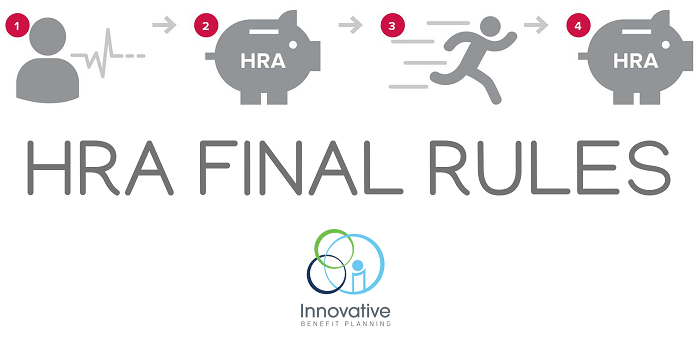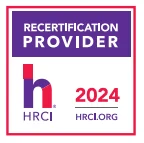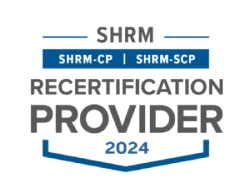HRA Final Rules

The Department of the Treasury (Treasury), Department of Labor (DOL), and Department of Health and Human Services (HHS) (collectively, the Departments) recently released their final rules regarding health reimbursement arrangements (HRAs) and other account-based group health plans.
An HRA is a type of account-based group health plan funded solely by employer contributions that reimburses an employee for IRC Section 213(d)medical care expenses incurred by the employee, or the employee’s spouse, dependents, and children who are not age 27 as of the end of the taxable year, up to a maximum fixed-dollar amount during a coverage period.
Link to IRC Section 213(d): https://www.govinfo.gov/content/pkg/USCODE-2011-title26/pdf/USCODE-2011-title26-subtitleA-chap1-subchapB-partVII-sec213.pdf
These reimbursements are excludable from the employee’s income and wages for federal income tax and employment tax purposes. An HRA can allow amounts that remain at the end of the year to be available to reimburse medical care expenses incurred in later years.
The final rules were published in the Federal Register on June 20, 2019, will be effective on August 19, 2019, and will generally apply for plan years beginning on or after January 1, 2020. The final rules provide a new special enrollment period in the individual market for January 1, 2020.
The final rule establishes new parameters to allow employers to offer an HRA to be used for the purpose of purchasing individual health coverage in lieu of a traditional group health plan, and separately for an HRA to be used for excepted benefits coverage.
The first major provision of the proposal would establish new parameters to allow employers to offer an HRA for tax-preferred funds to be used for the purpose of paying all or a portion of individual health coverage in lieu of a traditional group health plan. This would effectively provide the same tax benefits of the employer exclusion for individuals who obtain coverage on the individual market. The individual coverage HRA will be available on a class-by-class basis, with employers permitted to create classes of employees around certain employment distinctions, such as salaried workers versus hourly workers, full-time workers versus part-time workers, and workers in certain geographic areas. Employers will be able to maintain their existing group health plan for current enrollees, with new hires offered an individual coverage HRA.
The rule includes several provisions designed to prevent potential adverse selection. Employers may offer either an individual coverage HRA or a traditional group health plan within an employee class, but may not offer employees a choice between the two. Further, these plans must be offered on the same terms for all employees in a class of employees, although employers may increase the HRA amount for older workers and for workers with more dependents. The rule also established minimum class size requirements of roughly 10% of employees for employers with up to 200 employees, with a minimum group size of 10 for employers with fewer than 100 employees. HRA sponsors would need to provide a disclosure to employees on the type of HRA being offered and to notify eligible participants that they would not be eligible for the ACA’s advanced premium tax credits if receiving an HRA and enrolling in individual health coverage.
The second provision of the proposal would permit an employer to offer employees an HRA for excepted benefits, although the rule firmly states that excepted benefits are not individual coverage. Link to excepted benefits https://www.govinfo.gov/content/pkg/CFR-2005-title45-vol1/pdf/CFR-2005-title45-vol1-sec148-220.pdf Further, employers are not permitted to offer employees both an HRA for purchase of individual health coverage and an HRA for excepted benefits. This provision permits employers that offer traditional group health plans to provide an HRA of up to $1,800 per year, indexed to inflation, to reimburse an employee for certain qualified medical expenses, including premiums for short-term plans. Excepted benefits must not be an integral part of the health plan, the HRA must be made available under the same terms to similarly situated individuals, and the HRA cannot provide reimbursement for premiums for traditional health insurance coverage. This HRA could be available even if the employee doesn’t enroll in the traditional group health plan.
If you have questions regarding the HRA rules, please contact your Innovative Benefit Planning account manager.
Additional Resources
For a full discussion on the new rules and their requirements, see this detailed document with a comprehensive discussion on the new rules– (Link to longer document).
The DOL issued a news release, frequently asked questions, a model notice, and model attestations. Please see these resources for more details on the new rules.
Link to final rules: https://www.govinfo.gov/content/pkg/FR-2019-06-20/pdf/2019-12571.pdf
Link to news release: https://www.dol.gov/newsroom/releases/ebsa/ebsa20190613
Link to FAQs: https://www.hhs.gov/sites/default/files/health-reimbursement-arrangements.pdf
Link to Model Notice: https://www.cms.gov/CCIIO/Programs-and-Initiatives/Health-Insurance-Market-Reforms/Downloads/HRA-Model-Notice-PDF.pdf
Link to Model Attestations: https://www.cms.gov/CCIIO/Programs-and-Initiatives/Health-Insurance-Market-Reforms/Downloads/HRA-Model-Attestations-PDF.pdf
Categories
Archive







